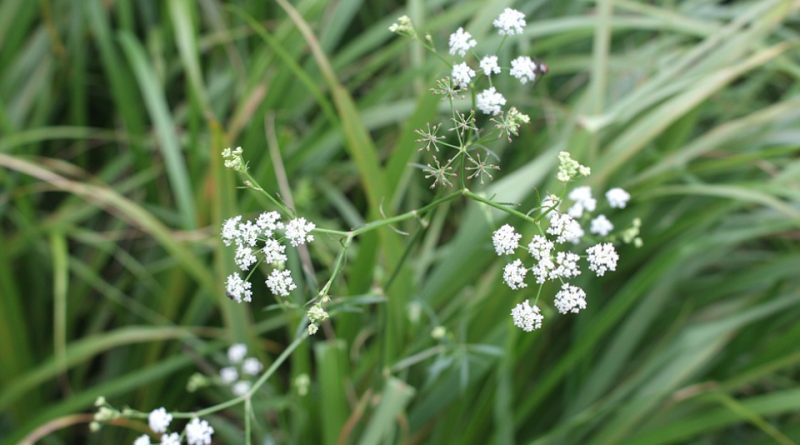Sium ninsi
Sium ninsi
Sium ninsi (Sium ninsi L.) is a herbaceous species belonging to the Apiaceae family.
Systematics –
From a systematic point of view it belongs to:
Eukaryota Domain,
Kingdom Plantae,
Magnoliophyta Division,
Magnoliopsida class,
Order Apiales,
Apiaceae family,
Genus Sium,
S. ninsi species.
The terms are synonymous:
– Cicuta ninci Crantz;
– Sium diversifolium H. Wolff;
– Sium ninsi Thunb ..
Etymology –
The term Sium comes from the Greek σίον síon, the name of a perennial plant of humid and marshy places in the northern hemisphere.
The specific epithet ninsi is not clear.
Geographic Distribution and Habitat –
Sium ninsi is a plant with origin in East Asia and with a prevalent distribution in South Korea and Japan.
Its habitat is that of wetlands, even partially submerged in waterproof soils.
Description –
Sium ninsi is a perennial herb plant.
It has an internally branched and hollow stem.
The lower leaves are pinnate, divided into leaflets. These are carried on petioles that line the stem at the base.
The inflorescence is an umbrella consisting of small flowers with white petals.
The dried fruits are diachenes that split in two when ripe, each part containing a seed.
Cultivation –
Sium ninsi is a plant that, especially in the past, was collected in nature for food and medicinal use.
They are aromatic plants that have a certain toxicity so their use must be operated with great caution.
The plants can be grown in humid areas, even in superficially submerged soils and propagation takes place with seeds and broadcast sowing in the spring.
Customs and Traditions –
Sium ninsi is a plant used for both food and medicinal purposes.
The leaves were cooked and consumed and the ripe seeds, which are aromatic for their limonene content, were used (in small quantities) as a spice or condiment.
There are reports of some medicinal uses of the plant but with fragmentary information.
Preparation Method –
The roots of this plant have been used for medicinal purposes. However, there is not much evidence in the literature and research on this is lacking.
Guido Bissanti
Sources
– Acta Plantarum – Flora of the Italian Regions.
– Wikipedia, the free encyclopedia.
– Useful Tropical Plants Database.
– Conti F., Abbate G., Alessandrini A., Blasi C. (ed.), 2005. An annotated checklist of the Italian vascular flora, Palombi Editore.
– Pignatti S., 1982. Flora of Italy, Edagricole, Bologna.
– Treben M., 2000. Health from the Lord’s Pharmacy, Advice and experiences with medicinal herbs, Ennsthaler Editore.
Photo source:
– https://inaturalist-open-data.s3.amazonaws.com/photos/4238290/original.jpg
Warning: Pharmaceutical applications and alimurgical uses are indicated for informational purposes only, they do not represent in any way a medical prescription; therefore no responsibility is taken for their use for curative, aesthetic or food purposes.


